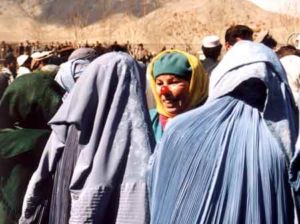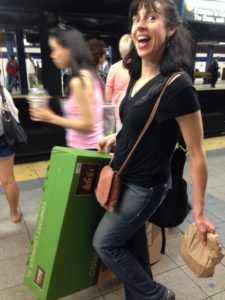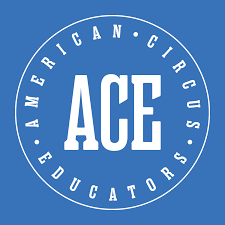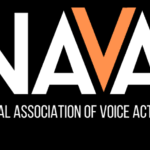A friend discovered—with very little notice—that he had an opportunity to go to Liberia and teach theatre to youth at an orphanage for 2 or 3 weeks. He asked me for some suggestions for over-arching goals as well as for a sample initial class and advice on how to make it run more smoothly.
Because artists are often working with people whose culture is different from their own, I thought it might be useful to share my reflections.
How to teach art cross-culturally as an artist in residence
Study their history
Of course, the first thing a visiting artist should do is learn as much as possible about the people with whom she will be working, taking care to note how respect is shown, the common pitfalls and errors that outsiders make, and what kinds of tasks, accomplishments, thoughts, gestures, and arts are valued or denigrated. I won’t go deeply into that kind of exploration and thinking, because that would be a whole blog in itself, and because my readers tend to already know to ask those kinds of questions.
taking care to note how respect is shown, the common pitfalls and errors that outsiders make, and what kinds of tasks, accomplishments, thoughts, gestures, and arts are valued or denigrated. I won’t go deeply into that kind of exploration and thinking, because that would be a whole blog in itself, and because my readers tend to already know to ask those kinds of questions.
Make your outline
Then, because you don’t really know what the desires and expectations of the various stakeholders, make several rough outlines of progressions:
* one with the goal to introduce basics of traditional Western Theatre (in case that is the learning being sought)
* one with the goal to focus on performing a Narrative (and what that means in this cultural context, or perhaps contrast/compare two or three Performed Narrative modalities)
* one with a goal to focus on character (gesture, character voice, character development, portrayal, word choice, etc).
Remember that they already have all that and know all that, just in a different way, and that they may OR MAY NOT give a sh*t about Western Theatre.
Find your activities
Inside each progression, I would have at least 6 activities to choose from in the moment. If you bring the idea that you will learn from them to the table, it will go a lot better.
As you are planning each session inside the progression (with your extra side activities, just in case) remember:
A) Your planning should cause you to be surprised and delighted by what they come up with. If it doesn’t, it’s not a good plan (your job is to prep the moment for discovery, not have people spit back what you gave them).
B) The periodic reflection parts of each workshop (which stylistically should borrow heavily from Visual Thinking Strategies) is where the cognitive learning happens—by reflecting and discovering out loud together, they are creating bridges between intuitive knowing and cognitive understanding, and they are doing it as an ensemble. It is also fosters active learning rather than passive (in other words, it will take them farther and they will own it more because you didn’t tell them, they told themselves).
Here’s a sample “Basics of Western Theatre” progression
Step 1. Warmup that focuses on group and individuality
I love the warm-up game where everyone says their own name with a movement, then everyone else copies and repeats it. After every 3rd person, you do the movements all in reverse order, together, like a dance. It’s always successful because it’s a nice half step between ‘solo’ and ‘group’ and everyone has to be everyone else (an important aspect of theatre—to be someone else). Plus it develops that ensemble feeling.
Step 2. Solicit reflections on the exercise
Ask questions about “what did you notice” and “how did you feel”; they will say all kinds of great stuff. Tell them they are brilliant, and make the connections to those things and theatre.
Step 3. Introduce the idea of Where
Break the large group into two groups. Each group must form a huddle and, without the other group hearing, pick a place. Each person in the huddle gets a turn to suggest a place or agree with someone else’s. No skipping someone, no saying “that’s dumb.” Someplace specific, so not “Liberia” but rather “the desert,” “the morgue,” “the cafe,” “the jungle,” “the school,” or even “the classroom,” “the school playground.” They may have to vote rather than achieving consensus.
Then each person chooses FOR THEMSELVES who or what they will be in that place. The aim, of course, is for the other team to be able to guess successfully where they are. They will get caught up in wanting to fool the other team—great time to remind them that being amazing performers means that the audience will know it and laugh with pleasure! I also try to steer them away from narrative or progressive events—the goal is to imagine “what are the things, people, animals that define this Where?” Do this exercise twice, with a reflection in between. The between reflection will probably include noticing that people can’t all talk at the same time.
Step 4. Add the What (with a little Who)
Break into still smaller groups (something between three people at smallest and five people at largest). Using the same huddle technique, each group will now think of an EVENT and a specific moment in that event. For example, they might pick a soccer game: The moment when the goalie leaped for the ball and let out a really big fart. Humor is great. They will then have to create a tableaux of that moment, but with enough “clues” in the human photograph that the audience will know what is happening!
It’s especially helpful to them if when you look at it, you notice implied details and then ask questions like: “Which one is the grownup?” “How did you know that?” “Is it… the way they are standing? Their expression?” Of course give a moment for response before going on to the next question!
Do this twice.
Step 5. Complete with the Who and Beginning/Middle/End
Generate, with their help, a list of 6-8 best known stories everyone knows (archetypal stories are best). NO MOVIES. Read some Liberian folktales and children’s stories before you go so you can make suggestions.
Each small group from the previous exercise will now choose a story (they whisper to you so you don’t have more than two groups per story). They will create three tableaux to tell the story—one from the beginning, one from the middle, one from the end. What are the most important moments? How will we know what is happening? What clues can you give us so we know who is who? How can you use people to be the setting as well as the characters?
Step 6. Wind down with an ensemble game
That’s a lot of work, especially if you’re dealing with small children or anyone who’s not used to doing this level of physical activity. It’s good to have a “cool down” prepared to bring your group back to feeling centered.
Altogether, this exercise usually takes me a little over an hour or even an hour and a half for a very large group. Everything in it feels basic, but that’s exactly the point. We’re trying to find the essence of performance and work toward a cohesiveness in the group. Applying these when working cross-culturally adds an extra element to it that makes the dynamic even stronger.






